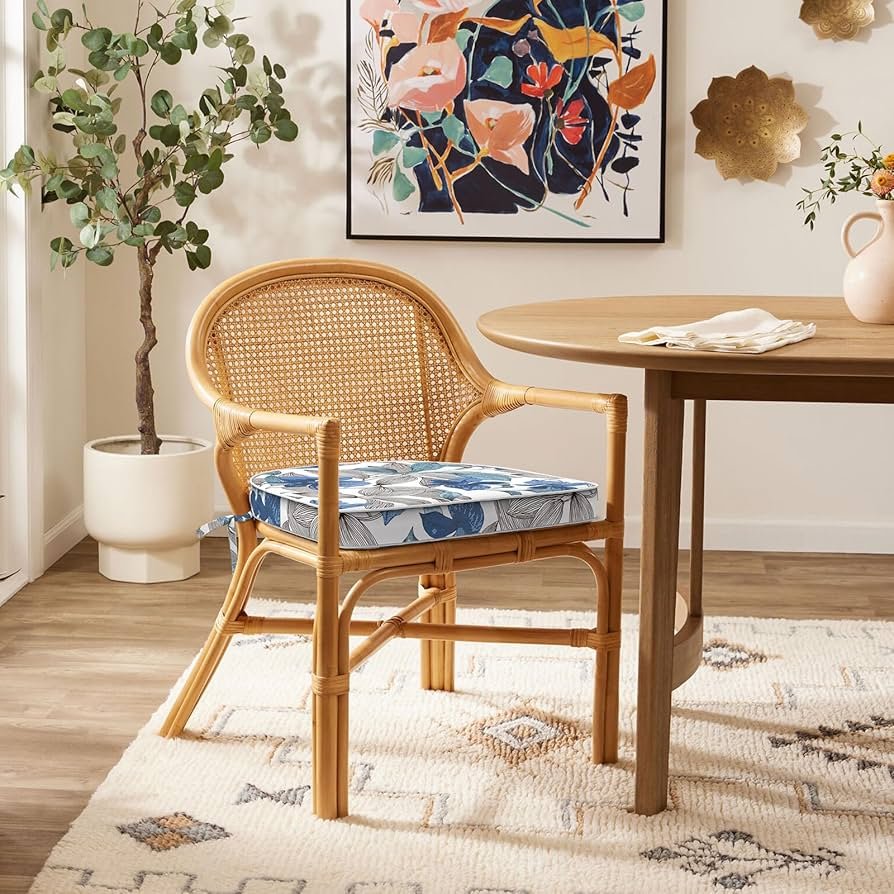When it comes to seating, comfort is a priority that cannot be compromised. Whether it’s for an office chair, dining chair, or even outdoor seating, a well-designed chair seat cushion can make a world of difference. But these cushions offer more than just comfort – they’re a key element in adding style and enhancing the overall aesthetic of your space. In this blog, we’ll explore the various benefits of chair seat cushions, the types available, and how to choose the right one for your needs.
Benefits of Chair Seat Cushions
- Comfort and Support The primary benefit of using chair seat cushions is to increase comfort. Sitting for extended periods can cause discomfort or strain on your lower back and hips. Cushions offer the necessary support by distributing body weight more evenly and reducing pressure points. Memory foam cushions, for instance, are popular for their ability to mold your body’s shape and offer personalized support.
- Improved Posture A well-designed cushion can significantly improve your posture by supporting your spine in a natural position. Ergonomic cushions are specifically designed to encourage proper alignment of the spine, reducing the chances of back pain, stiffness, and long-term issues.
- Temperature Regulation Some cushions, especially those made with gel or mesh, are designed to keep you cool. They allow for better air circulation, preventing overheating and sweating, which can happen with prolonged sitting, particularly in warmer climates.
- Aesthetic Appeal Beyond functionality, chair seat cushions add a layer of style and personality to your space. Whether you prefer vibrant colors, chic patterns, or sleek neutrals, there’s a cushion for every design theme. Cushions can complement your furniture, providing a pop of color or texture, and enhancing the overall decor of a room.
Types of Chair Seat Cushions
- Memory Foam Cushions Known for their superior comfort, memory foam cushions conform to the shape of your body, providing tailored support. These cushions are ideal for people who spend long hours sitting, such as in an office or home workspace. Memory foam retains its shape over time, ensuring long-lasting comfort.
- Gel Seat Cushions Gel cushions are perfect for keeping cool while seated. They are designed with a gel core that distributes body heat evenly, making them ideal for warmer environments or people prone to sweating. They also provide excellent support and pressure relief, much like memory foam.
- Orthopedic Cushions These cushions are designed to promote healthy posture and relieve pressure on the lower back, hips, and tailbone. They often have a contoured design that aligns the spine and supports the natural curve of your back, making them ideal for anyone suffering from chronic back pain or discomfort.
- Foam Cushions Standard foam cushions are lightweight and affordable, making them a popular choice for everyday use. They come in various thicknesses and densities, allowing you to choose based on your comfort preferences. Foam cushions are versatile and can be used on dining chairs, benches, and patio seating.
- Waterproof or Outdoor Cushions For outdoor seating, waterproof cushions are a must. They are designed to withstand the elements, with materials that are resistant to moisture, fading from sunlight, and mildew. These cushions add comfort to your outdoor furniture while maintaining durability against weather conditions.
Choosing the Right Chair Seat Cushion
- Consider the Purpose The function of the cushion will guide your choice. For office chairs, ergonomic or memory foam cushions are ideal, while dining chairs may require thinner, more decorative cushions. For outdoor seating, look for waterproof and durable materials.
- Material and Durability The cushion material plays a huge role in both comfort and aesthetics. Soft fabrics like cotton and microfiber are cozy but may not be as durable for high-traffic areas. Outdoor cushions typically feature water-resistant materials like polyester or olefin, designed to withstand exposure to the elements.
- Thickness and Support The thickness of the cushion affects both comfort and support. Thicker cushions generally provide more comfort, but they might not be ideal for chairs with limited seat depth. For ergonomic purposes, opt for cushions with at least 2 inches of thickness to provide adequate support.
- Design and Aesthetic When choosing chair seat cushions, consider the overall design of your room. Cushions are a great way to introduce new textures or colors. For a modern look, go for minimalist, solid-colored cushions, while for a more eclectic or cozy feel, consider patterns like floral prints, geometric designs, or traditional tufted styles.
Caring for Your Chair Seat Cushions
To ensure the longevity of your cushions, it’s essential to care for them properly. Cushions with removable covers can be easily washed, making them a low-maintenance option. For outdoor cushions, consider storing them indoors when not in use to protect them from moisture and fading. Regularly fluffing and rotating cushions can also help maintain their shape and prevent uneven wear.
Conclusion
Chair seat cushions are more than just a simple accessory. They are a fusion of comfort and style, enhancing your seating arrangements’ function and aesthetic. Whether you’re looking to improve posture in your home office or add a cozy touch to your dining area, there’s a cushion that fits your needs. By considering factors like material, thickness, and design, you can select the perfect cushion to elevate your seating experience and transform the look of your space.
